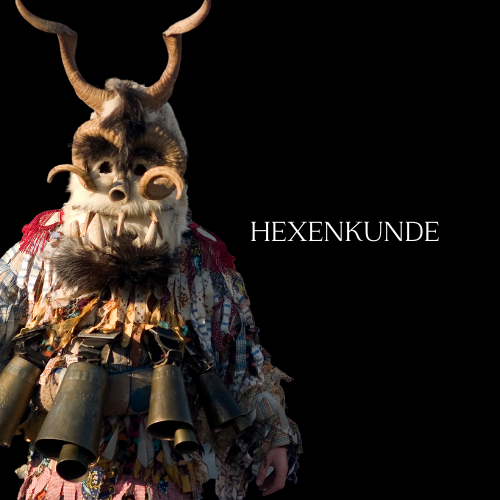Why does this research matter?
There is more to the myths, rituals and cosmologies of both pre-Christian Europe and Eurasia than meets the eye. In fact, In fact, they are much more complex than merely being a collection orally transmitted tales.
What is a cosmology? What is 'animistic', what is not? Does subsistence and the environment matter to rituals, beliefs and mythologies?
Is European Witchcraft a continuity or a Christian overlay of formerly pre-Christian beliefs? Were these beliefs 'animistic'?
What are pre-Christian belief-systems and how did we find out about them?
Was there a type of European shamanism?
Is there a connection between European and Eurasian pre-Christian cosmologies?

How do we know for sure and does it actually matter?
The vast body of anthropological research clearly demonstrates: it matters a lot.
Hexenkunde places emphasis on the ecology of ritual and belief. Therefore, prehistoric and traditional 'animistic' cultures did not just simply believe in spirits because it was fun to do so:
The ethnographic record regarding traditional hunter-gatherers cultures of Siberia, such as the Evenki, clearly demonstrates that such cosmologies, embedded in the boreal zone and a specific mode of subsistence, must be understood as cognitive human ecosystems (For example, see: Tim Ingold, 2006; Michael Rappenglueck, 2009). This applies to cosmological belief-systems worldwide and likewise to Europe's prehistoric cultures, healing-systems, folklore and mythologies.
The rituals, beliefs and mythologies reflected a certain way of relating to the natural world, to animals, to human existence and the human mind itself.
Animism
Animism in a Tylorian (Edward Tylor, anthropologist) sense has undergone tremendous change. The animistic perception of nature and the environment is neither primitive nor childish. Instead it emphasizes a shared reciprocity with the natural world (Nurit-Bird David, 1999). We know that traditional Eurasian cultures are 'animistic', but what about Europe in times past? How do we know for sure?
Cultural Dichotomies
As has been shown by several anthropologists, indigenous small-scale societies worldwide do not construct their identities on dichotomies such as nature/culture, human/animal, wild/civilization. (see e.g. Graham Harvey, 2005).
Why is that and did Europeans once share a similar way of looking at the world? If yes, what can we learn from this?
Environmentalism
Cultures considered 'pagan', 'shamanistic' or 'animistic' have certain ways of relating and engaging with the natural world (For example, see: Paul Shepard and Barry Sanders, 1985).
This is because their cosmologies reflect an ecosystem where humans are a part of nature, but certainly not a dominating force. What does this engagement with nature look like, and why or how, does it differ from modern societies?

Consciousness
Research regarding the mind and the nature of consciousness is incredibly complex.
There are many individuals whose work and dedication emphasizes the interrelatedness of humans, nature and 'reality' itself (For example, see: Donald D. Hoffman, 2017; 2018; 2019).
A recurring narrative in many pre-Christian myths is that of rebirth and reincarnation.
There are several scientists who have seriously contemplated and considered the reality of reincarnation such as Ian Stevenson and Jim B. Tucker (2005).
Naturally, this kind of research falls outside of Hexenkunde's purview. However, it may be appropriate to consider if there is something far more complex to these cosmological belief-systems than we currently understand?
Cultural Heritage
There is a growing body of research that suggests that pre-Christian beliefs didn't simply vanish and disappear.
In fact, historians such as Ramsay MacMullen have shown there was no Tabula Rasa-like Christianization process. Again, reality appears to have been much more complicated and nuanced.
Where did these beliefs go and were they expressed in customs, traditions or festivals/feasts? Have some of them even survived into the 18th, 19th Centuries?
If yes, how can we raise attention and awareness?
Intercultural Appreciation
The cosmological belief-systems across the northern hemisphere show many striking parallels and similarities, from myths to rituals (For example, see: A. Irving Hallowell, 1926; Hans Joachim Paproth, 1976).
Yet, research that seriously investigates such analogies for European cultures is scarce. There are, however, influential scholars who have shown many parallels to Siberian cultures based on similar economic and ecological conditions as far back as the Mesolithic (For example, see: Marek Zvelebil, 1997; Ole Grøn, 2005).
'Perhaps, the cultures of pre-Christian Europe had, at one point, a lot more in common with their Eurasian neighbors than we think, and possibly the reasons why revolve less around historical connections, but are instead more cognitive and ecological in nature?
If we understand these deeper layers of mentality and culture, could this increase our awareness, understanding and appreciation for indigenous cultures worldwide?
